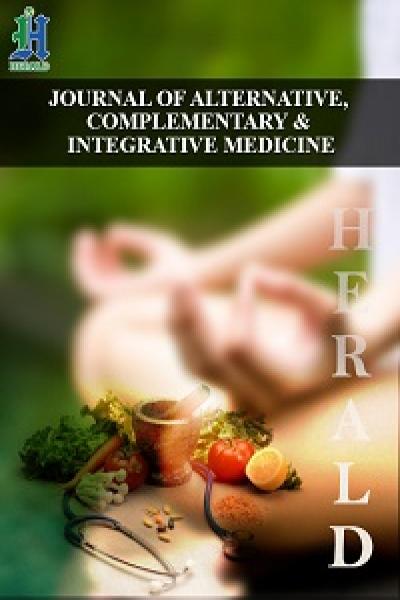
Brief Commentary Based on Articles “Biological Activity Evaluation of Olive, Grape and Fig at Various Mixing Ratios”
*Corresponding Author(s):
Ae-Jung KimDepartment Of Nutrition Therapy, Graduate School Of Alternative Medicine, Kyonggi University, Seoul, Korea
Tel:+82 23905044,
Email:aj5249@naver.com
Kim et al. have published a study on biological activity evaluation of olive, grape, and fig at various mixing ratios [1]. The Mediterranean diet proved to be one of the healthiest diets in the world by the consumption of a wide variety of foods such as olive, legumes, cereals, nuts, fruits, vegetables, dairy products, fish, and wine [2].
Among the Mediterranean foods such as olive, grape, and fig to aid in explaining reduced mortality and morbidity experienced by people consuming a traditional Mediterranean diet [3].
Olive (Olea europea L.) is the major source of unsaturated fatty acids and other components, such as fat-soluble vitamins, polyphenols, chlorophylls, and phytosterols [4,5].
Grape (Vitis vinifera L.) is the major source of antocyanin, flavonol, phenolic acid which have inhibitory effect on cardiovascular disease [6,7].
Fig (Ficus carica L.) is the major source of lanosterol and stigmastrol which have depressive effect on high level of serum cholesterol [8].
Thus, these Mediterranean foods provide several phytonutrients play a significant role against several chronic diseases [7].
So our study focused on synergy effect of olive, grape, and fig by determination of anti-oxidative and enzymatic activities. Four types of mixtures of Mediterranean foods were mixed in following ratios: olive-to-grape (OG), olive-to-fig (OF), and grape-to-fig (GF) at ratios of 1:1 (30 g of each) as well as olive-to-grape-to-fig (OGF) at a ratio of 1:1:1 (20 g of each). The total polyphenol and flavonoid contents along with DPPH (2,2-diphenyl-1-picrylhydrazyl) radical scavenging activity and ABTS( (2,2'-azino-bis(3-ethylbenzothiazoline-6-sulfonic acid) radical scavenging activity, α-glucosidase inhibitory activity and ACE (angiotensin-converting enzyme) inhibitory activity of the four aforementioned mixtures were determined.
In this study, the highest total polyphenol (26.25±0.20 mg TAE/g) and flavonoid contents (27.91±2.14 mg QE/g), were shown in OGF. The highest DPPH radical scavenging activity (98.72±0.38%) and ABTS radical scavenging activity (42.88±1.19%) were shown in OGF. The highest inhibitory activities of α-glucosidase (79.75±0.15%) and ACE (88.61±0.08%) were appeared in OGF.
In conclusion, highest physiological activity levels (anti-oxidative and enzymatic activites) were observed in the olive, grape, and fig (1:1:1) mixture (OGF). Hence, its consumption in the regular diet may decrease metabolic disease such as hypertension, diabetic disease and cardiovascular disease.
References
- Lee CH, Lee SY, Kim AJ (2024) Biological activity evaluation of olive, grape, and fig at various mixing ratios. Asian J Beauty Cosmetol 22: 91-101.
- Naureen Z, Bonetti G, Medori MC, Aquilanti B, Velluti V, et al. (2022) Foods of the Mediterranean diet: lacto-fermented food, the food pyramid and food combinations. J Prev Med Hyg 3: 28-35.
- Piroddi M, Albini A, Fabiani R, Giovannelli L, Luceri C, et al. (2017) Nutrigenomics of extra-virgin olive oil: A review. Biofactors 43:17-41.
- Brala CJ, Barbaric M, Markovic AK, Uršic S (2017) Handbook of olive oil. Phenolic compounds, production and health benefits. Nova Science Publishers 47-85.
- Keast R, Lucas L, Cicerale S (2010) Biological activities of phenolic compounds present in virgin olive oil. International J Molecular Sci 458-479.
- Chang EH, Jung SM, Park KS, Lim BS (2013). Contents of phenolic compounds and trans-resveratrol in different parts of Korean new grape cultivars. Korean J Food Sci and Technology 45: 708-713.
- Nassiri-Asl M, Hosseinzadeh H (2016) Review of the pharmacological effects of vitis vinifera (Grape) and its bioactive constituents: an update. Phytotherapy Research 30: 1392-1403.
- Smruti P, Sunitha K, Sailaja N (2022) Phyto-constituents and pharmacological profile of ficus species: A review. J PHARM PHARM SCI 11: 582-596.
Citation: Lee C-H, Lee S-Y, Kim A-J (2024) Brief Commentary Based on Articles “Biological Activity Evaluation of Olive, Grape, and Fig at Various Mixing Ratios”. J Altern Complement Integr Med 10: 504.
Copyright: © 2024 Chan-Hwi Lee, et al. This is an open-access article distributed under the terms of the Creative Commons Attribution License, which permits unrestricted use, distribution, and reproduction in any medium, provided the original author and source are credited.

